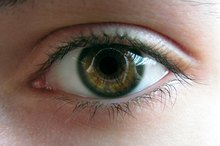What does fact checked mean?
At Healthfully, we strive to deliver objective content that is accurate and up-to-date. Our team periodically reviews articles in order to ensure content quality. The sources cited below consist of evidence from peer-reviewed journals, prominent medical organizations, academic associations, and government data.
The information contained on this site is for informational purposes only, and should not be used as a substitute for the advice of a professional health care provider. Please check with the appropriate physician regarding health questions and concerns. Although we strive to deliver accurate and up-to-date information, no guarantee to that effect is made.
Examples of Speech Goals for Traumatic Brain Injuries
Traumatic brain injury (TBI) causes a variety of deficits, depending on the extent of the injury. The rehabilitation team's job is to help the individual regain independence in activities of daily living (ADL). As a member of the hospital or outpatient team, speech-language pathologists (SLPs) work with individuals on using and understanding communication. They also specialize in muscles of the face, mouth and throat. So patients will find that speech goals for TBI cover speech, language, cognition and swallowing.
Speech Goals
Damage to nerves in the brain that control muscle movements can lead to impaired speech. According to the American Speech-Language Hearing Association (ASHA), when speech sounds slurred, soft, slow and mumbled, the condition is known as dysarthria 123. Goals to improve speech intelligibility for this condition include improving breath support, coordination of tongue and lip movements, and increasing muscle strength. Another condition, known as apraxia of speech, involves difficulty sequencing sounds and syllables. The person knows what to say, but cannot form the word. Goals include exercises to practice saying words correctly and slow the rate of speech. For very severe deficits, individuals may need to use an augmentative or alternative communication device. These range from picture boards to computerized communication systems. The SLP trains patients in the use of these systems.
- Damage to nerves in the brain that control muscle movements can lead to impaired speech.
- Goals to improve speech intelligibility for this condition include improving breath support, coordination of tongue and lip movements, and increasing muscle strength.
Language Goals
Physiological Barriers to Communication
Learn More
According to ASHA, persons with brain injuries may need to learn strategies for keeping up with rapid conversations, interpreting nonverbal signals such as facial expressions or body language, and what to say to maintain a conversation. The person with TBI may have a flat affect, showing little expression, and will need goals for how to improve. Good social language can help compensate for speech intelligibility problems. Eye contact, appropriate facial expressions and gesturing establish meaning in addition to speech.
- According to ASHA, persons with brain injuries may need to learn strategies for keeping up with rapid conversations, interpreting nonverbal signals such as facial expressions or body language, and what to say to maintain a conversation.
- The person with TBI may have a flat affect, showing little expression, and will need goals for how to improve.
Cognitive-Communication Goals
In order to communicate, a person must be able to attend to information and remember events to discuss. Persons with TBI may need goals for improving attention, short-term memory, planning and organizing, and ways to rehearse information to improve processing. Individuals need to be able to return to work or school, if possible, requiring the ability to ask appropriate questions, focus on and recall assignments, phone numbers, names, the sequence of steps in a project and safety issues.
Related Articles
References
- American Speech-Language Hearing Association: Traumatic Brain Injury
- American Speech-Language Hearing Association: Dysarthria
- American Speech-Language Hearing Association: Apraxia of Speech in Adults
- Childhood Apraxia of Speech: Treatment. Asha.org.
- Chang S, Synnestvedt A, Ostuni J, Ludlow C. Similarities in speech and white matter characteristics in idiopathic developmental stuttering and adult-onset stuttering. J Neurolinguistics. 2010;23(5):455-469. doi:10.1016/j.jneuroling.2008.11.004
- Stuttering. Asha.org.
- Scope of Practice in Speech-Language Pathology. American Speech-Language-Hearing Association website.
- Childhood Apraxia of Speech. American Speech-Language-Hearing Association website.
- Feeding and Swallowing Disorders (Dysphagia) in Children. American Speech-Language-Hearing Association website.
Resources
Writer Bio
Susan Hance began writing in 1990 with work appearing online and in magazines, newspapers and professional journals. Hance holds national and state licenses in speech-language pathology, a Bachelor of Arts in sociology from San Diego State University, and a Master of Science in communication disorders from East Carolina University.









